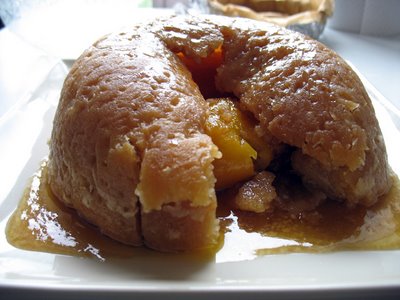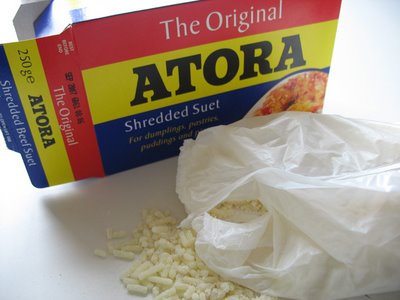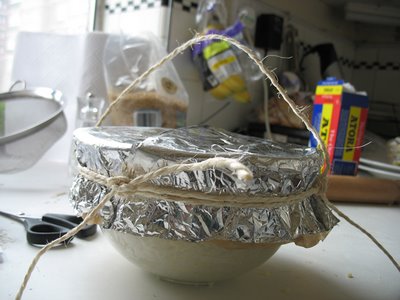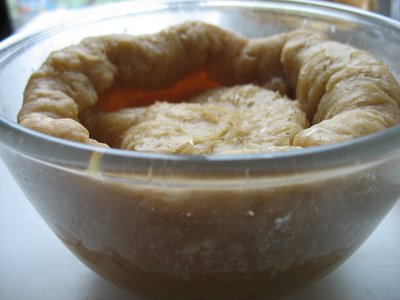'What's for Pud?' I'll tell ya what...
Ever since I saw Food and Drink’s Michael Barry joyfully pressing a lemon into a small amassment of butter and sugar with his thick fingers, I’ve been intrigued by the much forgotten Sussex Pond Pudding. I was about 12. As a general rule, watching someone with big ol’ sausages manipulating stodgy pastry inspires emotions close to disgust, but no, seeing that retina-burning vision did little to put me off, even at such a tender age. It was so fascinating. Beautiful, even. Simple elements, barely mixed together, yet the alchemic end product looked like it came from the hands of gods. Nothing could have dissuaded me from staring at that screen. Even if Mr Barry had stripped down to the waist and babyoiled himself up.

peek-a-boo
But the pudding was sadly never mine. The fact is though, food and memory are so inextricably entwined, so much so that forgetting food you've always wanted is an exacting task. It stays in your subconscious, bubbling subcutaneously until someone hands you a cue to remember. 'What's for Pud?' was a little like looking back through old school photos and seeing all those tiny faces you once shared classes and pencils with. Just like you and your best friend at Primary school, childhood and puddings go joyfully hand in hand. Memories made in sugar and eggs and butter. It doesn't matter that you may have never gotten to eat your longed-for-dessert either. You just had to dream of it.
Sussex Pond pudding is called as such because once made and inverted on a plate, cutting it open unleashes a molten flood of sauce consisting purely of butter, sugar and a whole lemon (buried inside like a toy surprise). Continuing to pour, the golden tar then encircles the low-looming pudding, forming a pond of sorts. Its name supposedly originates from the similarities between the dessert and circular, man-made 'dewponds' which are found in Sussex's downs. The few times I’ve seen this dish on TV have been like small wooden spoons stirring up old memories. Best of all, the pudding is oh so very English - how could it not be my entry for this event? Of course, being a fan of variation, there is the extreme temptation to hide a lil' lime in there instead of the more yellow member of the citrus family, but I am well aware it is not fitting for this particular occasion.
Problem number one: I am put-off making steamed puddings time and again for the sheer fact that they take, on average, 2 to 3 hours to steam. I’m not averse to the wait, but the idea of running a stove for that long makes me anxious to receive the next gas bill.
My second dilemma is that pudding staple: suet. Beef or vegetable? One is made from fat originating in parts of cows I doubt I’ll ever want to see, the other comprises mainly of brain-solidifying trans-fatty acids. So after much self-debate, rather than compromise my ethics, I plumped for the health-risking vegetable version. Standing in the supermarket aisle the whole argument imploded; Sainsbury’s only sell original beef-licious Atora. What’s a girl to do?

So, vacillations aside, I bit the bullet. I knew it was time to put a pudding to steam, lie back and think of England.
Sussex Pond Pudding
Suet Pastry:
- 225g self-raising flour
- a decent pinch of salt
- 110g shredded beef or vegetable suet
Melting middle:
- 175g Demerara sugar
- 110g unsalted butter
- 1 squeaky clean lemon
Check that your 900ml pudding basin fits in your saucepan (which must have a well-fitting lid too) and check how much water you need to fill the pan with to get the level halfway up the side of the bowl by doing a dummy run with cold water. If you don’t check this you could overfill the pan and displace a load of boiling water all over your thighs, which is careless, seeing as I’ve just warned you about it. Plus you could flood your pudding which would be possibly more tragic (I jest – scalding is a horrendous fate I wish on no one). Once you’ve done this, generously butter the basin.
To make the suet pastry, sift the flour and salt into a large mixing bowl, tip in your suet and combine with a knife (I like to use knives with plastic handles to ensure that the heat from my hand isn’t conducted down the blade and therefore doesn’t affect the pastry). Add the water in a tiny splash at a time, making curved motions with the knife through the mixture to incorporate it. Be light and swift and try not to overwork the pastry. Once enough water has been added to make the pastry clumpy but not wet, get stuck in with your hands and bring the lot together. The amount of water you use may end up being less than stated as many weather-type factors can affect pastry making. Regardless, it should feel firm and elastic and leave the bowl spanking clean.
Turn it onto a very lightly floured surface and set aside a quarter of the dough. Gently sculpt the three quarter amount into a round and with a floured rolling pin, gently but decisively stroke the pastry out, turning the dough a quarter of the way round every so often to keep it as circular as possible. Rather than there be a massive overhang of pastry, it needs to just line the bowl so don’t sacrifice thickness (which is what I did since I had no idea how the pastry would behave but with hindsight now know I could have kept the round a little smaller and had thicker pastry as a consequence). It will look as if it has a bad case of cellulite, but this is normal. Repeat the same with the quarter amount of pastry for the lid, rolling it so it is nearly as big as the diameter of your pudding bowl.
Lay the larger circle into the bowl and press it lightly to fit it to the interior. Try not to pound it so hard that you distort its thickness. However, if you do tear it, suet crust seems to be pretty forgiving and is easily patched up by using a little from the edge as a bandage (a healing kiss is not obligatory here, you will be pleased to know).

Measure out your butter and sugar separately. Cut half the butter into cubes and place into the lined basin with half the sugar. Stab your lemon all over with anything thin and sharp (knives better than forks here) and nestle it into the fat/sugar.

Pack in the remaining butter cubes and demerara around the lemon covering as much as possible. Dampen the edges of the lining and place the lid onto the filling, folding and pinching the two pastry edges over to seal in the goodness. See? It’s all very simple.

Now take a big sheet of foil, lay it shiny side down and place an equal sized sheet of baking parchment (or greaseproof paper) over it. Holding both, fold a pleat into their middle and place them over the basin with the foil now on top, so the pleat lies centrally. Smooth down across the sides and tie tightly round it with string, making a handle with another piece too. Make sure your knots are tied the right way too so that when you pick up the handle, they don’t come apart and you drop the whole load.

Lower crane-like into the pan of water which should now be boiling, Steam for three whole hours, which will give you time enough to continue your patriotism and perhaps watch two whole Britflicks. Bear in mind Trainspotting and things with Ewan McGregor sadly do not count. About an hour and a half into the steaming time (or after the first film), lift the pud out and top the water back up with a boiling kettle.

Three hours later, disrobe the basin and place a plate on top, inverting the whole unit ever so swiftly. If you hesitate midway, you may find a substantial dripping of sauce in places where it isn’t welcome.

Yes, it might look like a brain but don’t be put-off. It might look unsophisticated but this pudding is far more complex and luscious than it looks. Grab a spoon, dig in and let the sauce just flow. As the pastry deliquesces in the mouth, the tongue forms thoughts of a Demerara-crunchy, subtly bitter marmalade. Eat it how you like it – cream, custard or, like me, enjoy it just as it is. I promise it would put the most beatific smile on any face on anyone who
Tagged with: What's For Pud? and St George's Day

0 Comments:
Post a Comment
<< Home